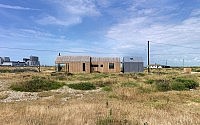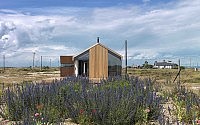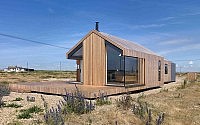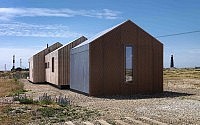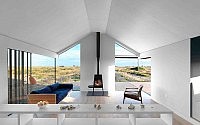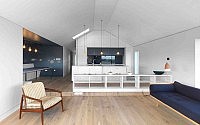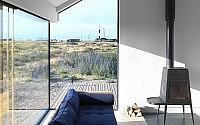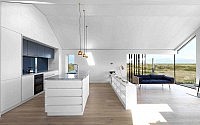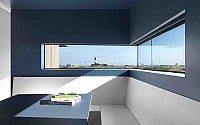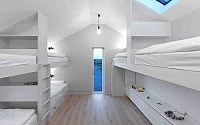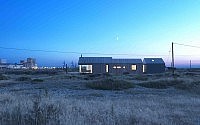Pobble House by Guy Hollaway Architects
Minimalist private residence designed in 2013 by Guy Hollaway Architects situated Ashford, Kent, United Kingdom.

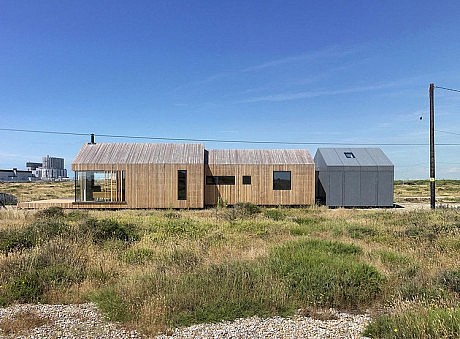
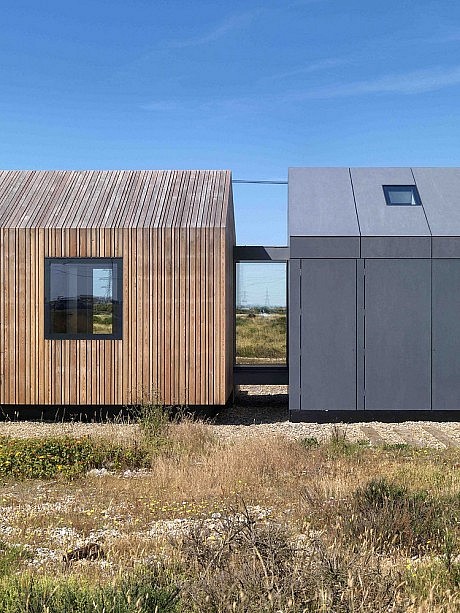
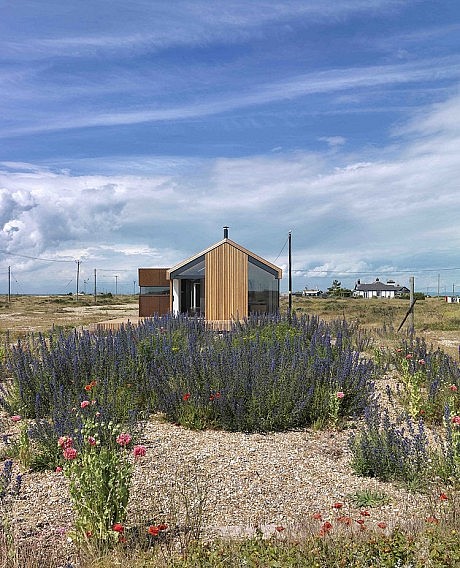



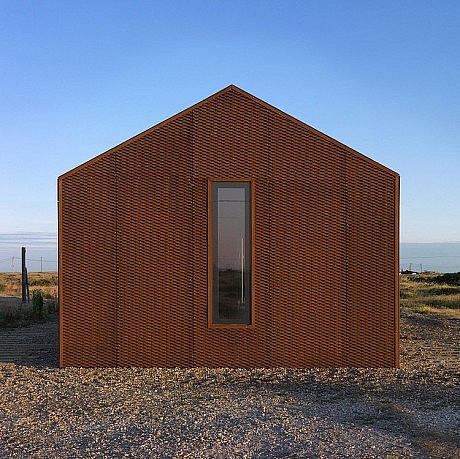

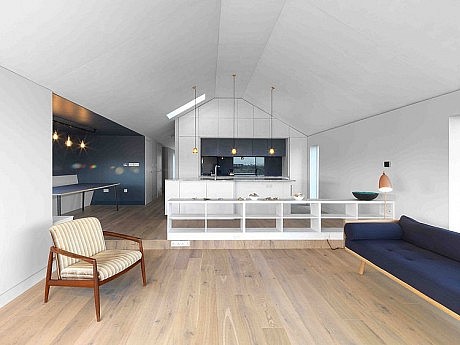
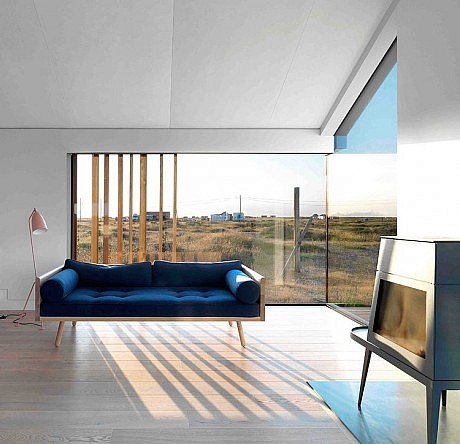
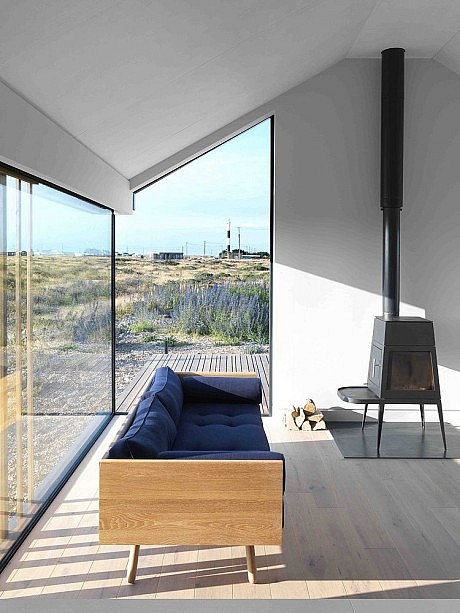
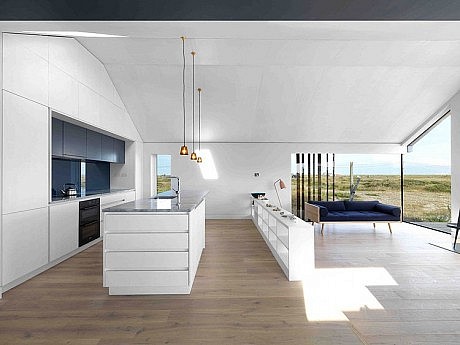
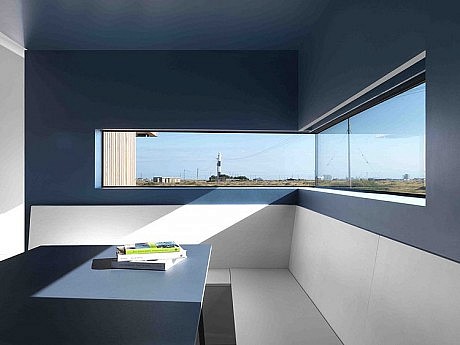
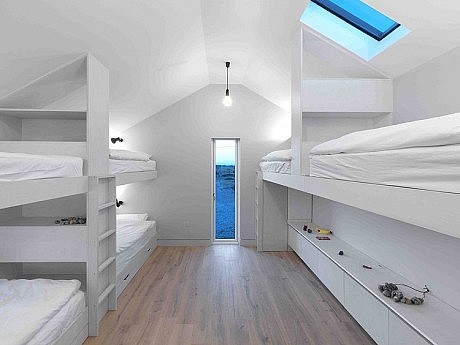
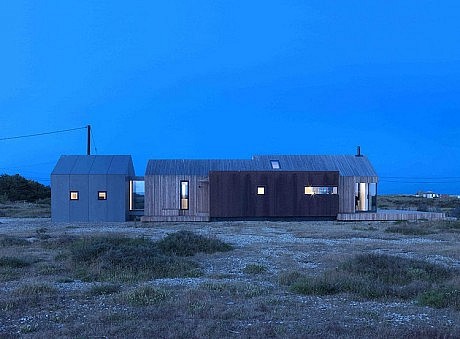
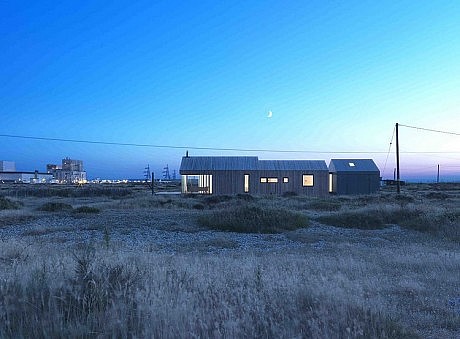
Description by Guy Hollaway Architects
‘Pobble House’ takes its name from an old Kentish word for pebble and is located within the Dungeness Estate, a stark and open headland on the Kent & Sussex coast that is home to Europe’s largest expanse of shingle, classifying it as Britain’s only desert. The area is home to a vast array of wildlife and plant species. As a result of this Dungeness is recognized as a Site of Special Scientific Interest (SSSI), National Nature Reserve, Conservation and Special landscape Area. It is home to a historically strong fishing community that inhabit a number of small weathered huts which are scattered along its shores. A miniature railway, introduced in 1927, runs alongside the site to the Romney Marshes train station. It is this unique character that has, and continues to appeal to people who are drawn to the site as a place to escape to. Along with washed up silvered timber, stranded objects line the beaches, in particular rusting metal debris. Derek Jarman famously transformed these beached objects into extraordinary pieces of art in the celebrated garden of his Prospect Cottage. The presence of Jarman’s cottage and garden contributes toward the growing architectural legacy of the area, fronted by Living Architecture’s Shingle House and Simon Condor Architect’s Rubber House. The site is dominated by the Dungeness Nuclear Power Station, the robust materiality and form of which contrasts to the natural surroundings. Two lighthouses form prominent features in the otherwise flat landscape. At night the active lighthouse floods the site with light in quick intervals, whilst glows from the two power station’s shimmer in the distance.
Owing to the sites significance, local planning policy dictates that any new building must replace an existing one and is to be of similar scale and proportion to that of the original. The design response from GHA to the clients brief was to create an architecture that understands ‘place’. To this end a material palette was chosen that would enhance with age, inspired by Dungeness. Whilst being designed to an incredibly tight budget of under £250,000, the building has a very high quality and robust nature to withstand the harsh climate.
To reduce the buildings impact on the natural shingle, it sits on a series of pad foundations which elevates the house off the beach, suspended by half a metre (1.64 feet). The timber frame construction is sealed by a rubber waterproofing layer that acts as a whole house gutter, allowing the rain to fall through the batten over-cladding and down the building. The three modules of the building are each enveloped in separate materials, a Core-ten steel mesh, Larch and robust cement fibre board that will each act as rain-shields. The building is extremely durable, an important aspect considering the harsh climate and exposed setting. The exposure will cause the larch and core-ten to weather silver and red respectively, an echo to the natural landscape. The building has been designed to be as energy efficient as possible. An air pressure test was carried out for which the building scored 3.4, well under SAP calculation compliance. Due to the absence of gas in the area, high efficiency photovoltaic roof panels with a 2.64kW peak have been installed on the flat roof module to generate additional electricity for the home and underfloor heating.
The new home is an intimate retreat that can sleep two families with three children each. It is comprised of three simple forms taken from the original dwelling. The entrance to the building is low key and protected from the harsh conditions. At its southern most section a large open plan kitchen, dining and living area form the heart of the home whilst a log burner, a combination of large format glazing and picture windows giving almost panoramic views over the spectacular site.
The corner of the living area is a cantilevered structure and the glazed sliding doors can be hidden within concealed wall pockets, creating an extension of living space. This allows for shelter depending on the direction of the prevailing wind or a completely open corner during good weather. What was once a disconnected garage is now a sleeper carriage-style children’s bunk bed compartment connected by a bridged glazed walkway, turning the three forms into one entity, much like the silhouette of the power stations. A corridor runs the buildings length, acting as an axis for the rest of the house using the landscape and landmarks as reference points, aligning perfectly with the lighthouse. A long horizontal window frames the Dungeness Power Station in a dramatic panoramic frame at seat-level in the dining area. ‘Pobble House’ forms a beautifully crafted home which seeks to continue Dungeness’s curious architectural legacy and has delivered an exceptionally high quality family retreat for our client and their growing family.
Photography by Charles Hosea
- by Matt Watts